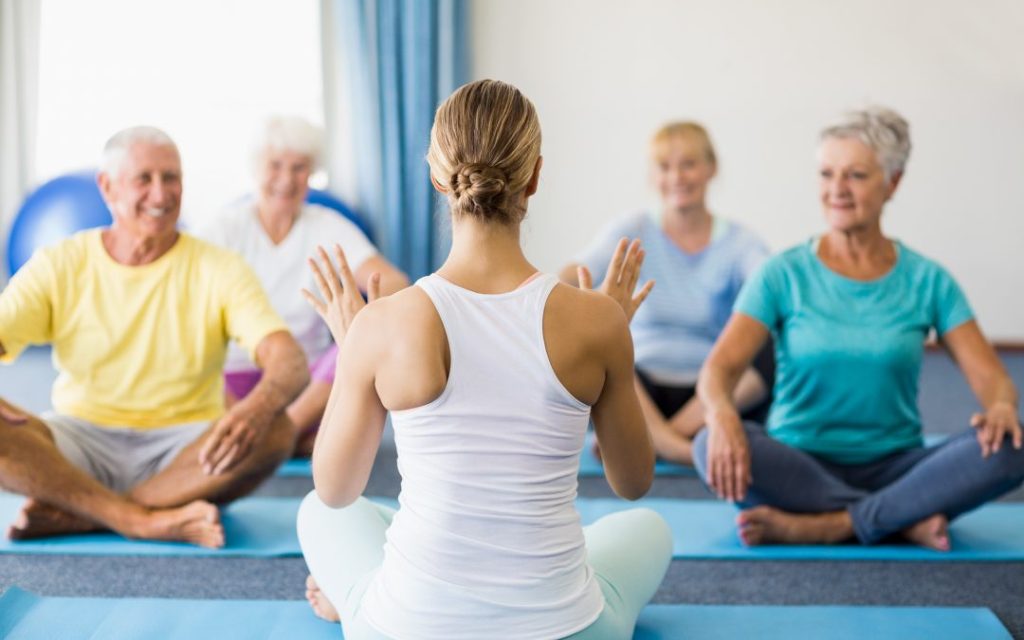What are the stretching tips for Seniors?
 As a senior, joint flexibility is one of the keys to living a healthy, active and independent lifestyle for as long as you can. While your joints may have stiffened over the last few years, it is never too late to start a stretching program to get back some of the flexibility lost. Without the intervention of a stretching program, muscles will keep getting shorter and continue to lose their elasticity. Stretching can reduce back and neck pain, improve posture and relieve pain caused by arthritis.
As a senior, joint flexibility is one of the keys to living a healthy, active and independent lifestyle for as long as you can. While your joints may have stiffened over the last few years, it is never too late to start a stretching program to get back some of the flexibility lost. Without the intervention of a stretching program, muscles will keep getting shorter and continue to lose their elasticity. Stretching can reduce back and neck pain, improve posture and relieve pain caused by arthritis.
While there are several different types of stretching, the one’s seniors should focus on are static and dynamic.
Static vs Dynamic: Static stretching is preferred for lasting muscle length and soft tissue flexibility. It places a reduced load on a muscle, but for a longer period of time. The muscle is slowly extended to its fullest length and held there for 10 to 30 seconds.
Dynamic stretching increases range of motion by placing a greater load, but for a shorter period of time. The muscle is still stretched (but at a faster rate) to its fullest length and held there, but for a shorter amount of time, usually 2 to 5 seconds. It more replicates muscle movement when that muscle is in use.
However, because “muscle bouncing” is more of a danger with dynamic stretching, static is a safer choice as far as minimizing the risk of an injury in seniors. If a dynamic stretching program is used to increase joint flexibility and range of motion, only do it on muscles that have been warmed up prior to stretching.
While stretching is commonly used as part of both pre- and post-workout training programs in younger adults, stretching is the whole exercise program for many seniors.
How Often Should I Stretch?
After muscles are warmed, by doing a mild cardio exercise such as walking, stretch each major muscle group 3 to 5 times holding each stretch for 10 to 30 seconds. To maintain flexibility, stretching should be performed 2 to 3 days per week. For maximum, flexibility stretch 4 to 5 days per week.
Sample Stretches
Lower Body:
Hip Extension – Stand while holding onto the back of a chair for stability. Extend one leg backward in a sweeping motion keeping your knee straight. Return to the starting position. Repeat 10 times with each leg.
Ankle Circles – Sit in a chair with your feet flat on the floor. Lift your right foot up bending at the knee. Rotate your foot in a circle 20 times. Change the rotation direction and move in a circle 20 times again. Repeat with another ankle.
Upper Body:
Bent Over Rows – From the standing position, hold onto the back of a chair with one hand for support. With your other arm fully extended downward and holding a lightweight in that hand, pull that arm up and back bending at the elbow until the upper arm is parallel to the floor. Repeat 10 times before switching arms.
Overhead Press – Seated in a chair with a light weight in each hand (chest level), ensure your arms are bent at the elbow. Forearms are perpendicular to the floor. Push the weights straight up until arms are fully extended. Hold for a second or two before lowering the weights back down to the starting position. Repeat 10 times.
Weights can be a bottle of water, unopened soup can or light dumbbells as required. Increasing and maintaining flexibility makes everyday tasks easier along with being less painful.